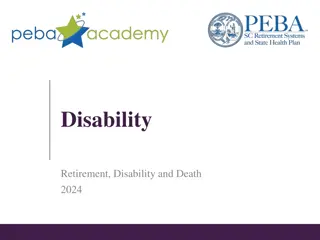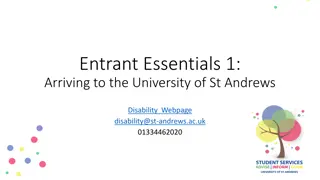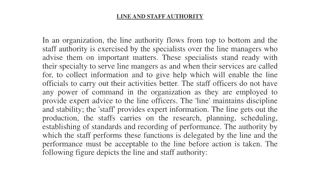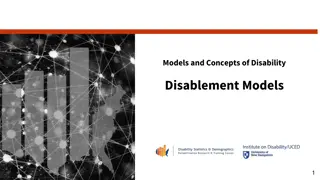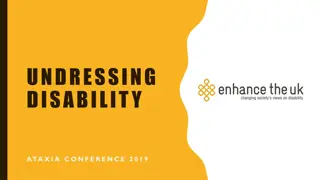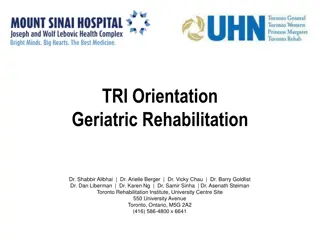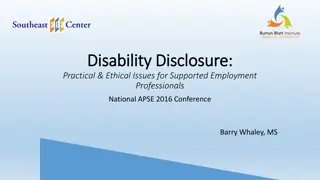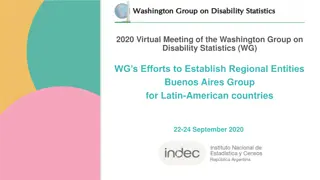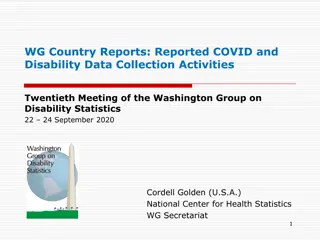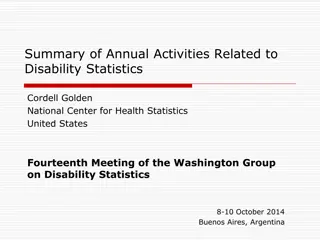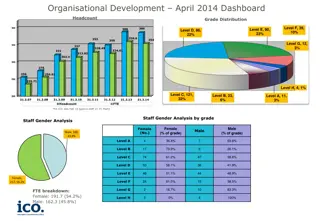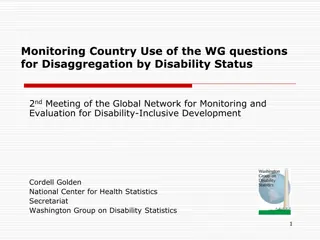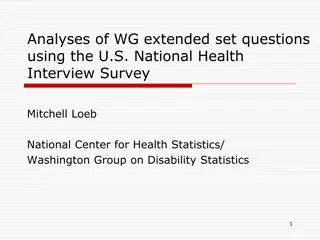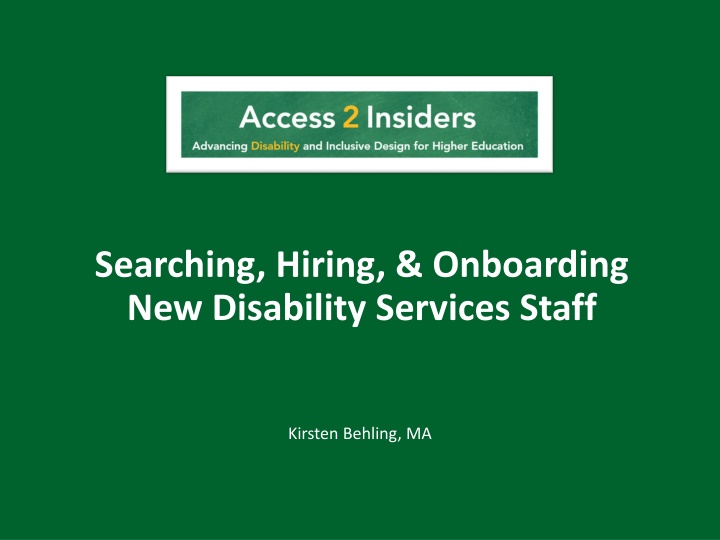
Crafting Effective Logistics for New Disability Services Staff
Explore the process of searching, hiring, and onboarding new disability services staff efficiently. Learn about job description crafting, recruitment strategies, resume reviews, interview processes, and onboarding guidelines. Address burnout issues, advocate for additional positions, and understand current limitations within the workplace to enhance service provision.
Download Presentation

Please find below an Image/Link to download the presentation.
The content on the website is provided AS IS for your information and personal use only. It may not be sold, licensed, or shared on other websites without obtaining consent from the author. If you encounter any issues during the download, it is possible that the publisher has removed the file from their server.
You are allowed to download the files provided on this website for personal or commercial use, subject to the condition that they are used lawfully. All files are the property of their respective owners.
The content on the website is provided AS IS for your information and personal use only. It may not be sold, licensed, or shared on other websites without obtaining consent from the author.
E N D
Presentation Transcript
Searching, Hiring, & Onboarding New Disability Services Staff Kirsten Behling, MA
Learning objectives Understand the logistical needs within our offices. Craft a job description that reflects your needs and attracts quality candidates. Identify strategies for where to advertise the position. List considerations for resume reviews. Develop a list of important screening questions. Understand how responses may impact your final decisions. Finalize your on-campus interview process. Create an onboarding schedule and guide for the new hire.
Do you need another position? Burnout What does this mean? Slower response rate to student need Higher complexities of student needs Proactive work is not possible What would you like to do? What are you projecting? How do you do this?
What is the position you need?
Advocating for another position Data, data, data 700 640 600 550 Number of students seen (vs. served) Increase in complexity of disabilities Average hours/ student spent (spell this out) Staffing hours Number of days it takes to get an appointment during peak times 500 430 398 400 300 200 100 2.5 2.5 2 2 0 Fall 20 Fall 21 Fall 22 Fall 23 # of students Staff
Advocating for another position Cite the law ADA/ Section 504 respond in a timely fashion
Advocating for another position What are your current limitations? Strictly meeting with students Increase hours spent/ student Lack of time for collaboration across departments Campus accessibility awareness not being done to the extent it should
Additional strategies for make your case: Site DS/student ratios in your peer institutions. Could it take on multiple tasks to fill multiple needs that you may have. Time your request with the budget cycle. Are hourly positions possible? Could the position could be 9 or 10 months? Could it be shared. What will happen if it is not funded?
Navigating the round 1 interview: What is the format? Who will do the screening? Consider how much time you have. Plan for 3 to 5 questions. Leave time for them to ask you questions. Conclude with the follow-up plan.
Potential round 1 questions Tell us about yourself. What interests you about this position? Develop questions related to the position: Describe your in-take process with students. What assistive technology should we consider? What is the best way to work with a resistant faculty member? Develop a work-style question: Please share an example of a time when where you were challenged by competing priorities. What strategies did you use to navigate this situation? Describe your communication style with your teammates. How do you move on from a difficult situation? Give them time for questions, take a note as to what those are.
Round 2: The interview process Who should meet the candidates? The ODS team Campus stakeholders Students Create a schedule and send it ahead of time with the names of those that they will meet. Build in breaks for the candidate to take a moment. End the day with a wrap up time to ask lingering questions and learn about next steps. Ask if they have any dietary or accommodation needs. Provide logistical suppo.t directions, parking, public transport information
Interview Schedule for an Accessibility Specialist 10:00 10:30 10:30 11:30 11:30 11:45 11:45 12:45 12:45 1:00 Welcome and getting settled Meeting with the team (anyone who will work directly with the position could also include students) Break Meeting with the ODS leadership Wrap up
Interview schedule for an Associate Director 10:00 10:30 10:30 11:30 11:30 11:45 11:45 12:45 12:45 1:45 1:45 2:45 2:45 3:00 Welcome and getting settled Meeting with the team (anyone who will work directly with the position could also include students) Break Meeting with campus stakeholders Lunch with students or staff Meeting with ODS leadership Wrap up
Develop round 2 interview questions Scenario question: A student comes into the office. They share that they need support but are unsure what type of support or who to connect with. How would you navigate this conversation? Tell us about a time that you navigated a situation that required skills in de-escalation? Two- part scenario question: You have an initial intake or welcome meeting with a student. o Describe your process in determining reasonable college-level accommodations. determine reasonable accommodations? What is your experience with outreach either in-person (tabling, etc.) to prospective students or current students? Tell us about a professional development opportunity you are interested in pursuing in the next year? What questions can I answer about myself, the role, our team, or the institution?
Making your decision Review the job description and the skills you are looking for. Review the rubrics and feedback from those who met with your candidates. Consider their potential immediate impact verses long-term impact what suits your needs? Do you have final candidates that you d like to consider? Or is it a failed search? Call references for your two final candidates. Work with your HR department to make an offer.
Welcoming your team member to campus
Cover page of Disability Services in Higher Education: An Insider's Guide by Kirsten T. Behling, Eileen H. Bellemore, Lisa B. Bibeau, Andrew S. Cioffi, and Bridget A. McNamee. Thank you! Kirsten.Behling@tufts.edu www.Access2Insiders.net


